OLPC XO 3.0 Tablet Hands-On: 6-Minutes of Hand Crank for An Hour of Power
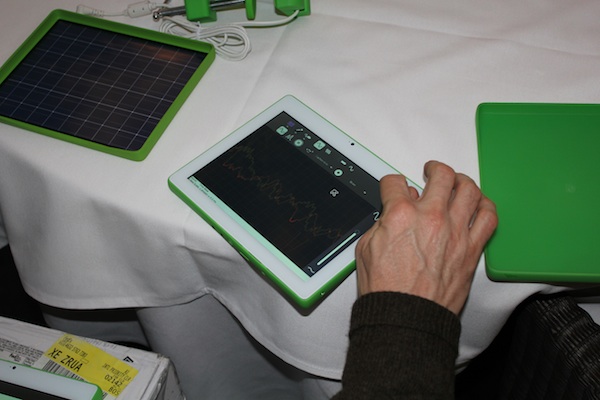
LAS VEGAS -- Earlier this weekend, the One Laptop Per Child project announced it was ready to ship its first tablet, the XO 3.0. Today, we had the opportunity to get a private demo with this truly unique, low-power slate that's designed for students in developing countries. Though our demo was short, we were impressed with the XO 3.0's unique hard plastic design and its ability to get power from alternative energy sources such as a hand crank and a solar panel.
Powered by Marvell's 1-GHz Armada PXA618 processor, the XO 3.0 sports an 8-inch, 1024 x 768 screen that the organization feels is the right balance between larger 10-inch slates and the 7-inch devices we've seen from Amazon, Toshiba, and Acer. The screen itself comes in two configurations, traditional LCD or Pixel Qi sunlight readable. Though the Pixel Qi panel works much better in sunlight and uses less power, OLPC CTO Ed McNierney told us that a lot of the governments and NGOs that purchase these devices may opt for the LCD panel simply because it's a bit cheaper. Unfortunately, the panel on our demo unit was of the LCD variety.
If you're familiar with the XO laptop, the green and white plastic design of the XO 3.0 will seem very familiar. Still, we think this aesthetic looks much more appropriate in the tablet form factor than it does on a notebook. The accessories, including the hand crank and solar panel, are all made of the same green plastic. We found the matching rubber XO cover particularly attractive.
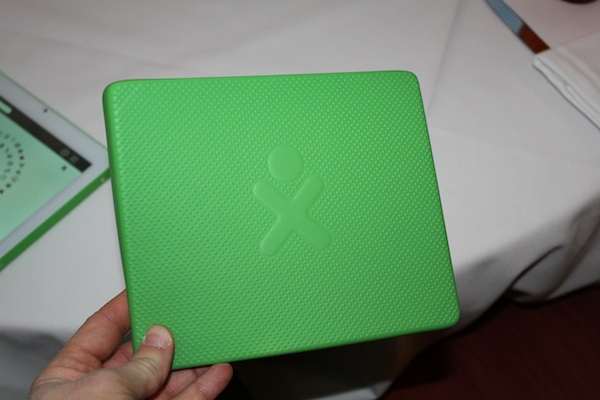
The bottom side of the unit has a few helpful ports, including dual audio jacks for attaching external microphones, a mini USB port, and a full size USB port. McNierney told that having full USB is really important for users in developing countries where sneakernet, the practice of sharing files by trading USB keys is more common than Internet access. He also said that the dual 3.5mm audio ports can take other types of attachments including a thermometer.
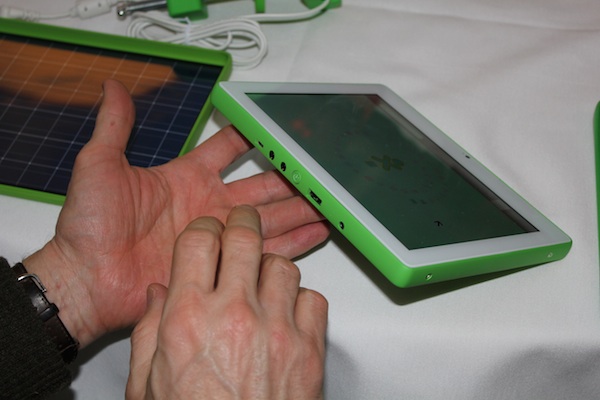
Like OLPC's laptops, the XO 3.0 runs the organization's favored Sugar UI on top of a Linux base. The circular desktop ring may be confusing to Windows and Mac OS users, but the organization still likes the interface's potential. McNierny showed us a couple of interesting Sugar apps, including an oscilloscope app that measures background noise using the XO 3.0's microphone and an offline Wikipedia app that lets children read encyclopedia entries.
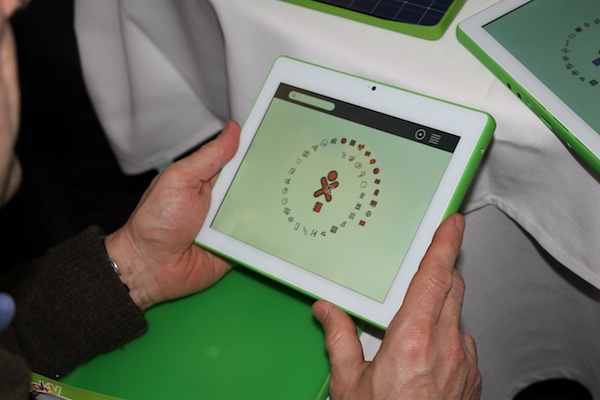
We were most impressed with the XO 3.0's strong support for two alternative power souces: hand cranking and solar energy. McNierney showed us a hand crank that can be used to generate electricity for the device and said that the tablet is so low power that it gives you 10 times the amount of time you put into it; six minutes of cranking gives you 60 minutes of tablet power.
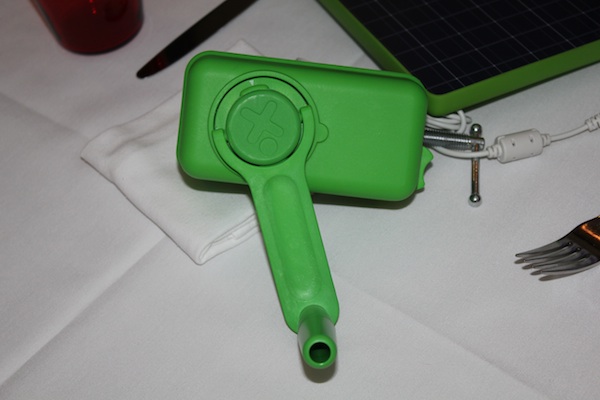
McNierney also showed off a 4 watt solar panel cover that can sit out in the sun charging up. Because the XO 3.0 only uses 2 watts of power, he said, you get twice as much battery time as the panel spends charging. The tablet can snap into the solar panel and use it as an external battery case.
Stay in the know with Laptop Mag
Get our in-depth reviews, helpful tips, great deals, and the biggest news stories delivered to your inbox.
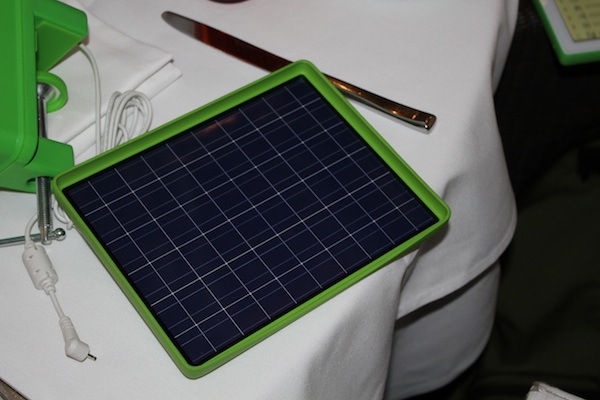
The XO 3.0 is ready for mass production today, but OLPC is waiting for a large order from an appropriate group (government, charity, NGO) to order production. It takes about five months to produce a batch of tablets, he said.

